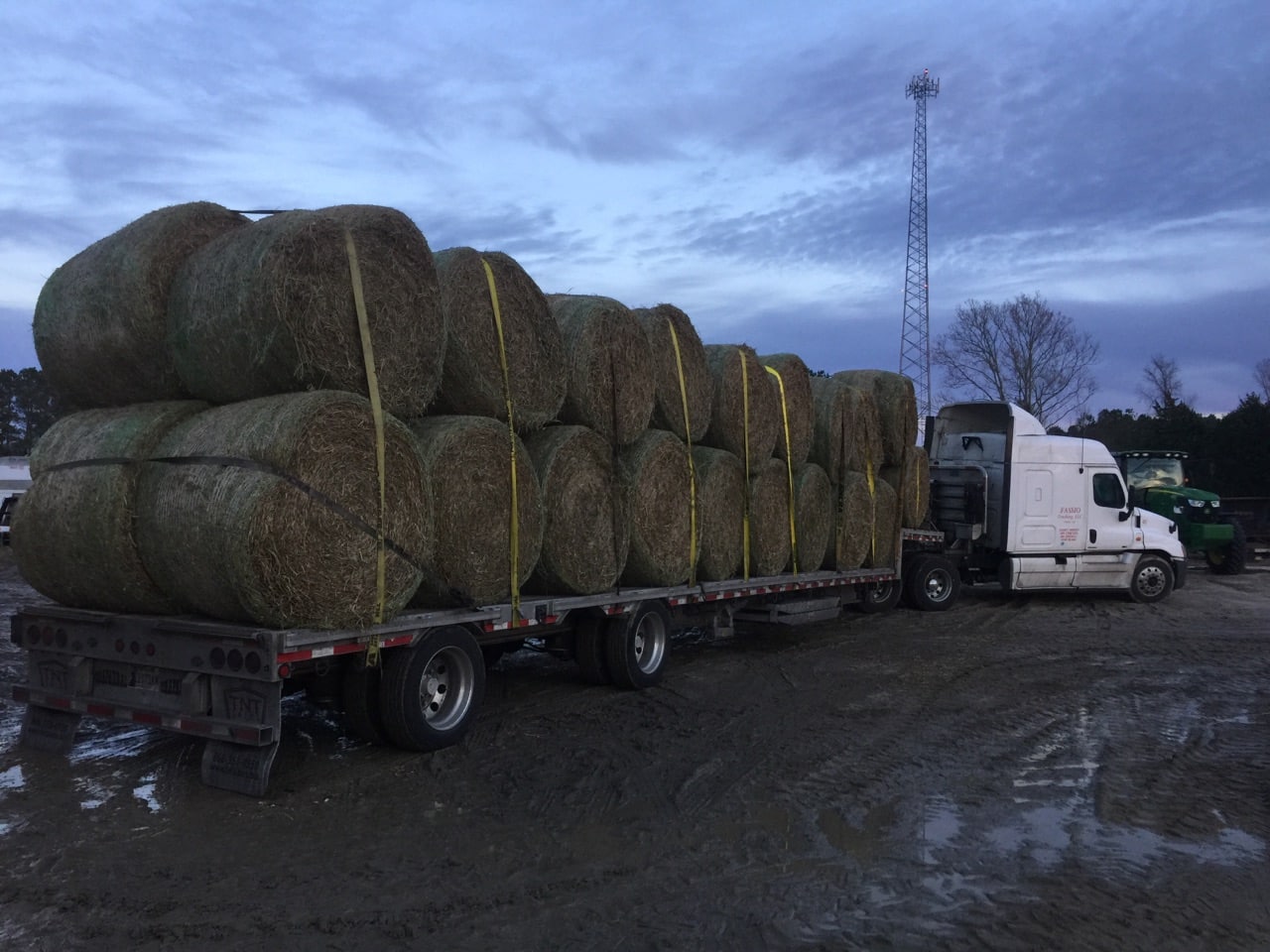
Hay making equipment can be difficult to transport. Many pieces, such as rakes and tedders, are longer than the trailers we use. The wings usually fold up, but then drivers can face height issues as well as length or width problems. The weight of your hay-making equipment usually isn’t a dimensional issue.
Overheight equipment requires transportation on a step-deck trailer or an RGN trailer. Equipment that’s extra long might need an extended length trailer. Gear that violates state width regulations might have to travel as a wide load. Loading can be difficult. Most hay-making equipment must be backed onto a trailer using your tractor. It can be tricky.
Tip #1: Break down your equipment so the load isn’t oversize. Maybe take off the wheels. Yes, it’s a big hassle. But you’ll save so much on shipping, it’s worth it to pay someone to help you disassemble large pieces of farm equipment.
Making hay involves four basic processes: cutting, turning, treating, windrowing and baling. The pieces of equipment used in the four processes all require special handling for transportation.
Mowers – Cutting the Hay
Mowers cut the the grass, legumes and other plant matter in a field. We ship all the most common types of towable mower implements, including:
- Rotary disc mowers
- Sickle bar mowers
- Zero turn mowers
Disc mowers usually are towed behind tractors to cut grass, while sickle bar mowers extend from the side of the tractor. Zero-turn mowers are used more for lawns than for agriculture. Ask your representative if your zero-turn mower or your mower attachment can travel as part of a partial load, which saves you money.
Recommended trailer: Flatbed. Mower attachments usually don’t exceed any dimensional limits. Large mower attachments are folded together. With no tires, they’re are loaded horizontally and not vertically. Zero-turn mowers can travel on a flatbed, or as part of a partial load.
Swathers – Cutting and Arranging the Hay
Swathers cut the grass and then create rows of mowed grass, called windrows, that can be collected. Farm swathers come in two versions, both of which we ship:
- Self propelled
- Tractor mounted
Tractor-mounted swathers are pulled behind tractors to cut and windrow grass. Self-propelled swathers, often called windrowers, are similar to combines, though they’re less heavy. The largest swathers travel as oversize loads.
Recommended trailer: RGN. Self-propelled swathers usually require RGNs, because the wheels are so far from the cab. Take off the wheels, and it might fit on a step deck-trailer. Tractor-mounted swathers, however, offer height problems. When folded for travel, they’re often more than 9-feet tall. An RGN, or at least a step-deck with ramps, usually is required.
Tedders – Turning the Hay
Tedders turn over the hay so the piles of cut grass dry completely. Conditioners and sprayers are used to treat the hay before it gets baled. We ship all types of equipment used to prepare hay for baling, including:
- Rotary tedders
- Reel tedders
Shipping tedders is a real pain. Be prepared to pay. Large tedders and rakes might have to travel as an oversize load, which raises transportation costs further. You’ll use your tractor to back your tedder aboard the trailer.
Recommended trailer: RGN. Tedders are folded together, then travel upright on the trailer. Smaller tedders that fold lengthwise can travel on a flatbed, if you can load them. Tedders can be more than 30 feet long, so you might require so extra height or extra length from your trailer.
Rakes – Windrowing the Hay
Hay rakes form the turned hay into rows for gathering or baling. If you don’t use a swather that cuts grass and forms windrows, you’ll need to rake the hay into windrows. We ship all types of hay rakes, including:
- Rotary rakes
- Wheel rakes
- Bar rakes
Like tedders, shipping rakes can be difficult. Once folded, hay rakes can exceed height limits. Large hay rakes can be oversize. Larger hay rakes also can challenge length limits. Back your hay rake onto the trailer using your tractor.
Recommended trailer: RGN. Again, in this instance the ease of loading over the front of an RGN makes it worth the cost. Hay rakes can be unwieldy. You can use a step-deck with ramps for smaller hay rakes. Smaller rakes might be able to travel aboard a flatbed, saving you money.
Balers – Baling the Hay
Balers compress the hay into bales for storage. We transport both main types of baler:
- Round balers
- Square balers
Small balers produce 50-pound bales, while large balers crank out 1,000-pound bales. Likewise, large balers can weigh twice as much (10,000 pounds) as small balers. Weight shouldn’t prevent you from loading multiple small balers on one trailer.
Recommended trailer: Step deck. Balers can be more than 9-feet tall. A flatbed is restricted to carrying items 8 ½ -feet tall or shorter. You’ll gain a foot or more in clearance by shipping on a step-deck trailer. Most balers can be backed aboard the trailer using a tractor. RGN is another choice.
Tip #2: Clean your equipment thoroughly before transportation. You don’t want any of the equipment’s features obscured by mud or debris while you’re loading it onto the trailer. Wash off your equipment so that people handling it during transport can see where to tie it down.